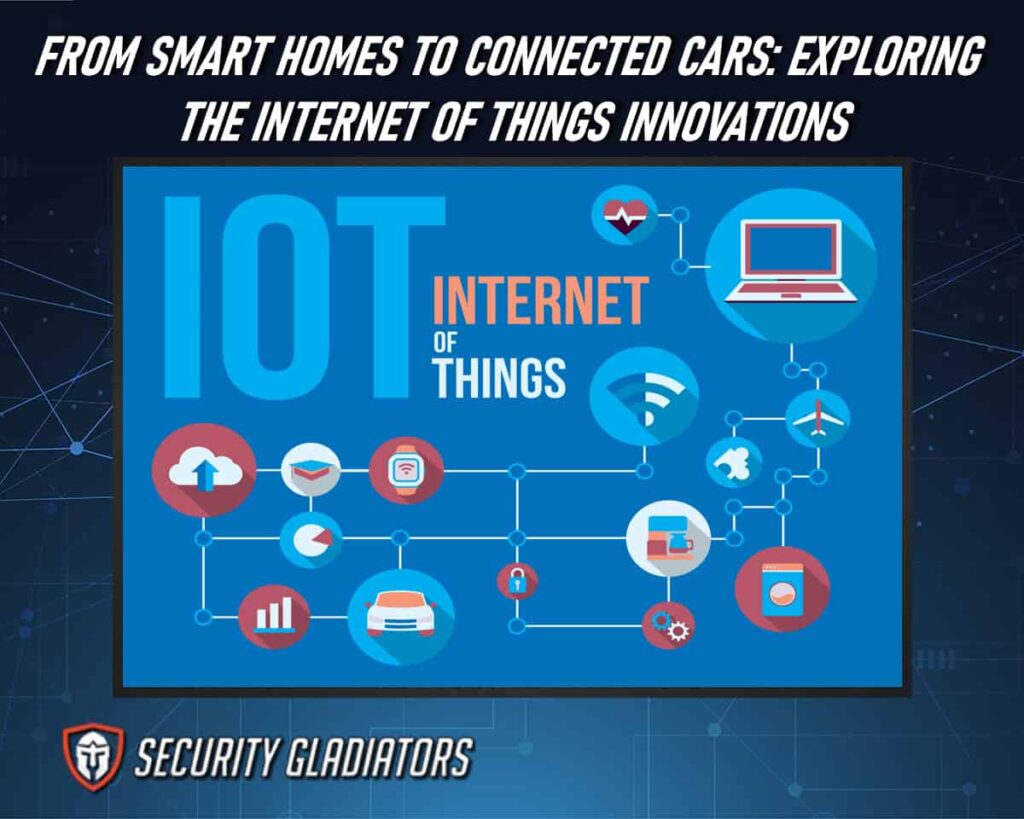
Table of Contents
An Overview of IoT
IoT technology has become increasingly popular in recent years due to its ability to provide convenience and efficiency in everyday life. By connecting multiple electronic systems together over an internet connection, it is possible for users to monitor their environment remotely from any location in the world using their smartphones or computers. This type of connectivity also allows users to automate certain processes by programming specific tasks into the IoT platform that will execute when certain conditions are met. Such automation makes it easier for people to manage their daily activities with minimal effort while still ensuring safety and accuracy.
This ever-growing network of interconnected devices presents huge potential for businesses in terms of both cost savings and efficiency gains as they can now access real-time data from numerous sources which can then be analyzed quickly in order to make better-informed decisions faster than ever before. With more advancements being made on a regular basis, it is increasingly likely that IoT will become an integral part of our lives within the foreseeable future.
What Is IoT?
The Internet of Things (IoT) refers to a network of physical objects, such as IoT sensors, actuators, and smart devices that are connected with each other via the internet. These IoT devices can communicate with each other through wireless networks, allowing them to interact and exchange data without any human intervention. One example of these IoT systems is a smart home system where various sensors and actuators are used to control lights, temperature, security cameras, etc. All these individual components are then connected to a centralized platform which allows for efficient monitoring and control over all aspects of the home’s environment.
IoT technologies enable the collection of large amounts of data from connected devices, which is then stored in databases in the cloud and managed by analytics tools. This data can be used to gain insights into customer behavior, detect trends in usage patterns, and improve efficiency across industries such as energy management and transportation. Additionally, it allows businesses to make decisions based on real-time information rather than guesswork or historical records. Therefore, IoT security should be enhanced to protect data being transferred.
The applications of IoT are far-reaching; they range from helping people monitor their health with wearables to providing real-time traffic updates for efficient route planning. Moreover, it has enabled companies to develop solutions that address many social issues like pollution control through improved energy consumption monitoring or water resource management through remote water level monitoring systems.
How Does IoT Work?
IoT works by embedding sensors, actuators, and other electronic components into physical objects, enabling them to collect and transmit data. These devices are equipped with unique identifiers and connect to the internet through wired or wireless networks, allowing them to communicate with each other or with centralized servers. Through this connectivity, IoT devices can gather real-time information, receive commands, and perform actions based on the data they receive. The data collected by IoT devices can be analyzed and processed to extract valuable insights, optimize operations, and enable automation across various domains, ranging from smart homes and cities to industrial settings and healthcare systems. Creating an IoT network requires certain components:
1. Smart Devices
These are internet-connected devices with the ability to collect and send data over a network or the internet. Examples include fitness trackers, smart home systems, security cameras, etc.
2. Hardware
Smart objects must have some type of hardware component that can detect changes in their environment; this could be anything from motion sensors to temperature gauges.
3. Software
Smart devices require software in order to interpret incoming data and decide how it should respond accordingly. This includes things like algorithms that determine when lights turn on/off or when notifications are sent out based on user behavior.
4. Data Collection & Storage
Once collected by the smart device(s), this data needs to be stored somewhere so it can be accessed for later use or analysis. Popular options include cloud services like Amazon Web Services (AWS) or Google Cloud Platform (GCP).
Applications of IoT
By leveraging the power of embedded computing capabilities, physical objects can be connected in order to unlock a range of new possibilities for users. This type of technology allows users to access information through sensor data gathered from various locations. Furthermore, they can analyze this data in real time or store it for later use. In addition to its consumer applications, IoT has a wide array of industrial uses as well. Many organizations are utilizing connected device networks within their operations by using sensors to monitor energy consumption and production levels or by tracking the location of vehicles used for transportation purposes.
Utilizing IoT technology, cybersecurity solutions can leverage real-time data analysis and machine learning algorithms to identify and respond to emerging threats, enhancing overall system resilience and protection.
In healthcare settings, IoT technologies have been utilized for patient monitoring systems as well as medical equipment management systems which allow providers to track the status and usage of certain pieces of medical equipment from remote locations.
Note:
The potential applications associated with IoT are vast and varied; some being practical while others still remain hypothetical at this stage in time. However, as the world continues to embrace interconnectedness via digital platforms, it is likely that even more ways will be discovered on how we can incorporate sensor-based networks into our lives while reaping its many benefits.Industrial IoT
Industrial operations can be enhanced through the integration of embedded computing technology, allowing for improved efficiency and accuracy. This is known as Industrial IoT (IIoT), which refers to the use of connected sensors and other devices in industrial environments. IIoT systems are made up of a combination of hardware, machine learning algorithms, and software solutions that allow for greater control over industrial processes and enable predictive maintenance capabilities. The benefits of IIoT include improved fleet management, more efficient business processes, increased safety levels in factories, and enhanced supply chains with reduced costs. IIoT also provides better visibility into the overall performance of the organization’s assets by collecting real-time data from various sources.
With this data, organizations can gain insights into how their equipment is performing or identify patterns that could lead to process improvements or cost savings. By utilizing IIoT solutions, organizations can achieve higher levels of efficiency while reducing their operational costs significantly. Organizations are not only benefiting from better asset utilization but also from improved worker safety due to the increased visibility provided by such systems. Additionally, with predictive maintenance capabilities enabled by machine learning algorithms, organizations can reduce downtime caused by unexpected breakdowns or malfunctions in machinery or equipment.
Industrial Internet of Things and Life Improvements
The integration of IIoT solutions into industrial operations has resulted in numerous life improvements, such as improved asset utilization, cost savings, and increased worker safety. In addition to these advantages, the spread of IIoT technology has enabled a variety of smart devices to enter our everyday lives:
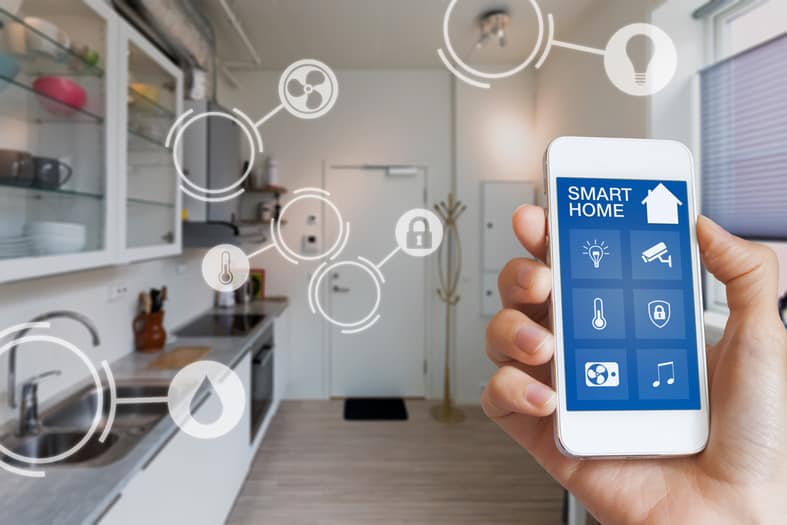
- Smart thermostats allow for automated temperature control systems that can be remotely monitored and managed.
- Smart homes are also becoming increasingly popular with the use of interconnected appliances and central hubs that control lighting, security cameras, door locks, heating systems etc.
- Connected cars are another example of IIoT technology being integrated into the automotive industry with features such as self-parking or remote diagnostics.
Benefits IIoT for Business
The implementation of IIoT solutions has enabled businesses to increase operational efficiency, reduce costs, and improve customer satisfaction. IoT System technology enables industrial devices to be interconnected in a network that can exchange data with each other in real-time. This allows businesses to have a better understanding of their production processes and operations, allowing them to make informed decisions quickly. Additionally, the security systems employed by IoT Systems are sophisticated, making use of encryption schemes and protocols for data security. This ensures that data remains secure at all times, reducing the risk of breaches or unauthorized access.
Moreover, Enterprise IoT solutions allow organizations to manage multiple networks from within the same system. This makes it easier for them to access information on different devices, while also providing control over various aspects such as device access rights and user permissions. Furthermore, with these solutions comes an improved ability for businesses to monitor their operations in real-time and take preventive measures when needed. This helps ensure that any problems are addressed quickly which can help reduce downtime and maximize productivity levels.
In addition, IIoT also brings numerous benefits when it comes to customer service excellence. Companies can use the data collected from connected devices to gain invaluable insights into customer behaviors which can then be used to tailor services accordingly and improve overall experiences for customers. With this level of customization comes increased loyalty which is essential for any business looking for long-term success in today’s competitive market landscape.
IoT Technologies
Connected devices are the foundation of IoT technologies, providing businesses with an enhanced level of control and visibility over their operations. At the core of these technologies is constrained application protocol (CoAP), a communications protocol used to connect physical world objects with internet protocols. Additionally, IoT technologies allow businesses to collect data from various sources, which can be leveraged to optimize processes and develop new products and services. This data can also be shared between applications or other entities with access privileges. Ultimately, IoT technologies bridge operational technology (OT) with information technology (IT), allowing organizations to better monitor their activities and make faster decisions.
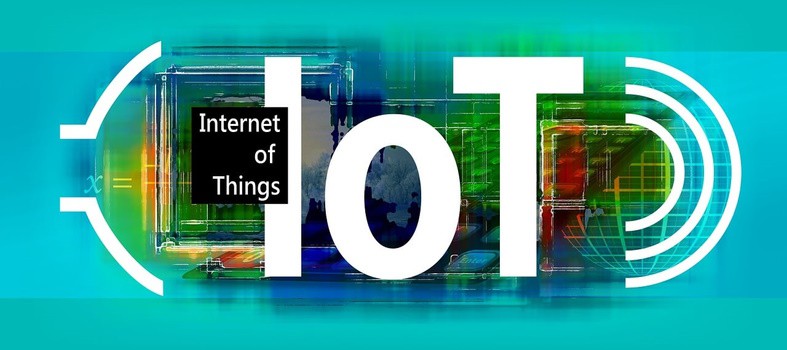
The benefits that IoT technologies provide range from improved safety and security measures to enhanced customer service options. For example, by connecting existing systems such as surveillance cameras or other security devices, businesses can track activities in real-time while responding quickly when needed. Similarly, connected sensors on production lines can detect malfunctions before they become costly problems that could disrupt operations or damage products. Furthermore, predictive maintenance enabled through IoT solutions allows organizations to identify potential issues before they arise so that preventive measures can be taken in advance.
IoT technologies have revolutionized the way companies operate by offering unprecedented advantages for monitoring activities across multiple departments within an organization. By implementing a comprehensive suite of solutions tailored specifically to their needs, businesses can gain valuable insights into their operations while ensuring customer satisfaction and creating a more efficient work environment overall. Some of the major significant technologies in IoT include:
1. Edge Computing
Edge computing is an emerging technology that enables businesses to move computing from the cloud to the edge of their network, allowing for more secure and efficient use of resources. It can be used by IoT companies to provide services like home security systems or smart home devices which are powered by electrical and electronics engineers. Edge computing also helps reduce latency when working with electronic devices as the data processing is done directly on the device instead of being sent to a remote server or cloud. This makes it possible to quickly collect, analyze and act upon data in real time.
This type of computing has many benefits for IoT companies as it allows them to process large amounts of data quickly and securely, without sacrificing their resources or compromising user privacy. Additionally, edge computing makes it easier for electrical and electronics engineers to optimize applications for different types of devices such as sensors, cameras, mobile phones, etc., making them more reliable and accurate. Finally, using edge computing can help reduce operational costs due to less reliance on central servers or clouds.
Edge computing provides a number of advantages over traditional cloud-based solutions including improved performance, greater scalability, reduced latency, and better security measures. It is also ideal for applications that require low latency or high throughput such as in-home automation systems or industrial automation systems that require real-time analysis of data from multiple sources. As such, edge computing is becoming increasingly popular among IoT companies looking to deliver better quality services at an affordable price while ensuring data privacy remains intact.
2. Cloud Computing
The intersection of edge computing and cloud computing is essential to the Internet of Things (IoT). Cloud computing is an integral part of many IoT projects, as it provides a scalable platform with expansive storage capabilities. It is often used for storing video footage from security cameras or managing large-scale smart city initiatives that involve multiple devices operating on different systems. Additionally, cloud computing helps increase internet connectivity in areas where traditional wired systems are either impractical or cost prohibitive. This allows more critical infrastructure to remain connected with wireless connectivity options that offer higher reliability than other forms of communication such as radio signals or satellite systems.
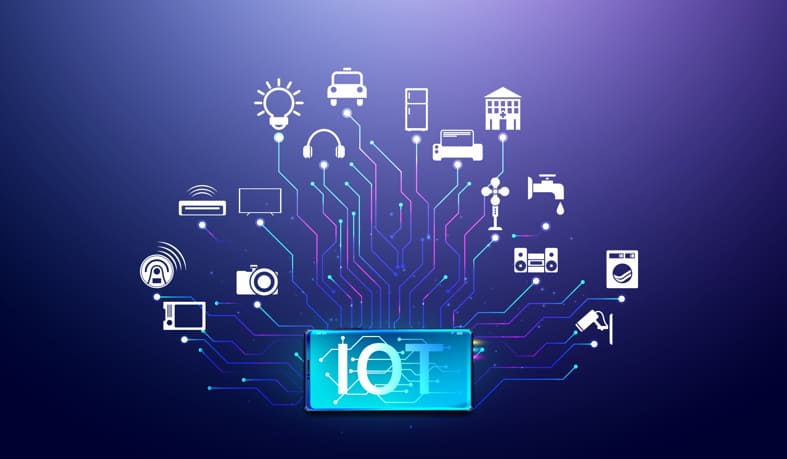
By utilizing cloud services with advanced authentication protocols, organizations can ensure secure connections between their devices and central hubs for effective data management and share over vast distances without compromising data integrity or user privacy. Cloud-based solutions also provide the flexibility needed for accommodating new applications quickly and efficiently while reducing operational costs associated with IT maintenance personnel and hardware upgrades.
Artificial Intelligence (Al) And Machine Learning (ML) In IoT
AI and ML are both advanced forms of artificial intelligence that have become essential for the development of modern applications. AI is a broad term used to describe any type of computer system or software with a wide range of capabilities, from basic data processing to sophisticated decision-making. On the other hand, Machine Learning (ML) is a subset of AI that focuses on training computers to recognize patterns in data sets and use those patterns to make decisions without explicitly being programmed. In relation to the Internet of Things (IoT), AI and ML can be used to optimize smart devices such as smart meters by allowing them to process data more efficiently while also providing better communication protocols for transferring data between devices over an internet connection. This provides businesses with the ability to collect large amounts of information from connected sensors and devices, which can then be analyzed using AI and ML algorithms in order to gain insights into customer behavior. Additionally, it allows organizations to automate certain processes such as customer service or advertising campaigns, making them more efficient and cost-effective.
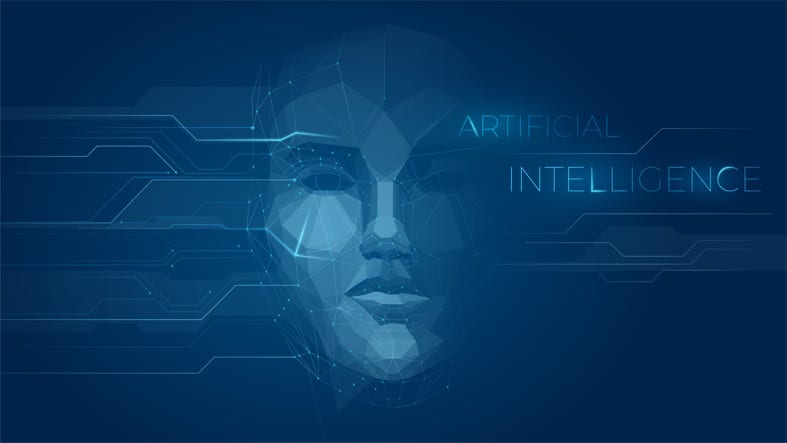
AI and ML have become integral components of IoT technology due to their ability to quickly process large amounts of data collected from various sources. By applying these technologies, businesses are able to not only customize their products according to customer’s needs but also improve their overall efficiency by automating certain tasks like maintenance or customer service. Furthermore, they enable improved communication protocols between different types of connected devices which facilitates better transfer rates for transferring data over an internet connection. As such, AI and ML are key components when it comes to developing modern applications that are based on IoT technology.
In recent years there has been a significant increase in research-related IoT applications powered by AI/ML algorithms as well as companies investing heavily in this field due to its potential benefits for business operations. It is clear that these two technologies will continue playing an important role within the Internet of Things ecosystem going forward as they enable systems that are capable of collecting large amounts of data from connected sensors while also providing improved communication protocols for transferring this information over an Internet connection at higher speeds than ever before.
What Are the Security Benefits of AI and ML
AI and ML offer numerous security benefits for the Internet of Things, such as improved authentication processes and increased data protection. These technologies allow other IoT devices to authenticate themselves, providing greater control over access to consumer devices, wireless networks, industrial systems, and IoT services. This allows developers to better protect user data from malicious actors who seek to gain unauthorized access or exploit vulnerable areas of a system.
Additionally, AI can be used to detect any suspicious behavior on a network in order to detect Zero Day Exploits and other security threats early on before they become an issue. AI-enabled systems are designed to learn from past behaviors in order to improve their accuracy and effectiveness when it comes to detecting and preventing malicious activities. This helps ensure that all connected devices remain secure by quickly identifying any suspicious activity or intrusions that could potentially compromise the network’s security. Furthermore, AI-powered solutions can be used for automated patching of vulnerable areas in a system which helps reduce the risk of data breaches caused by known vulnerabilities being exploited by cybercriminals.
Note:
ML algorithms have been developed that can help identify anomalies in usage patterns with regard to IoT devices which would otherwise go unnoticed due to large amounts of data being processed simultaneously. By flagging these abnormalities through advanced analytics techniques such as machine learning models, organizations are able to take proactive measures against potential threats before they become damaging incidents.Scalable Solutions of AI and ML in IoT
The implementation of AI and ML technologies allows for the development of scalable solutions that can efficiently process large amounts of data in order to detect any irregularities or potential threats. This is especially important when it comes to the Internet of Things (IoT), as physical devices, such as motion sensors, thermostats, and lighting fixtures, are connected to other devices that can be used as part of a larger IoT infrastructure. As more and more devices are connected to each other, many IoT devices can become vulnerable to cyber-attacks if not properly secured. Therefore, having the ability to scale up security solutions quickly is essential in ensuring that all connected devices are safe and secure.
Scalable solutions allow organizations to easily adjust their security systems based on their current needs by adding additional layers of protection or expanding their existing system with minimal effort. For instance, an organization may decide they need additional firewalls or encryption protocols depending on how many new IoT devices they have added since their last security update. Furthermore, these solutions are also able to monitor incoming traffic from any suspicious sources in order to catch any malicious activities early before any damage is done. By providing a way for businesses and consumers alike to securely connect multiple devices together without sacrificing performance or compromising safety, scalable solutions provide an invaluable service towards making sure that our increasingly interconnected world remains secure against cyber threats while taking advantage of the latest advancements in technology.
AWS IoT
Amazon Web Services Internet of Things (AWS IoT) offers a comprehensive suite of tools and services that enable organizations to securely connect their devices and manage them remotely. These solutions are designed to be used in a variety of industrial settings, such as manufacturing, healthcare, transportation, and logistics. AWS IoT provides businesses with the potential to create new revenue streams through connected products, by leveraging the data generated by everyday devices and systems in the supply chain. Moreover, AWS IoT helps organizations build an end-to-end IoT ecosystem with its broad range of offerings including analytics, machine learning services, cloud infrastructure management tools, development kits for hardware prototyping, device certification programs, and more.
The scalability offered by AWS IoT makes it suitable for businesses operating at any scale – from startups to Fortune companies – as they can start small using basic features like device shadowing or Thing Registry and then grow gradually into advanced capabilities such as machine learning inference on edge devices or fleet management functions. Furthermore, due to its open-source nature with many SDKs available for different platforms such as Arduino IDE or Python libraries for Raspberry Pi boards – developers can quickly prototype their applications using popular microcontrollers before deploying them into production environments.
Building With AWS
Building with AWS allows organizations to quickly and securely deploy connected products in a variety of industrial settings, enabling them to create new revenue streams and foster innovation. The AWS IoT platform provides numerous features that streamline the process of deploying connected devices, including device gateway, analytics, cloud storage, and machine learning capabilities. Organizations can also use the AWS Mobile SDK to build rich user experiences for their customers on iOS and Android devices.
Using the tools provided by AWS, organizations can easily connect any type of device or sensor to their network. This gives them access to real-time data from connected sensors as well as insights gained through machine learning models. Additionally, data stored in the cloud is secure and accessible only by users who are authorized by the organization’s security policy. Through this method of collecting data from multiple sources, businesses can gain valuable insights into customer behavior and usage patterns which can be used for further innovation or product development.
AWS offers a comprehensive set of services designed to help companies build innovative applications quickly while ensuring that they remain secure at all times. By leveraging these services, businesses have the ability to rapidly develop new products that leverage existing infrastructure without sacrificing performance or reliability. With its range of features and scalability options available on multiple platforms across different geographies, AWS makes it easy for companies to take advantage of the Internet of Things (IoT) technology for their business needs.
What Are Examples of IoT Devices?
1. Connected Cars
Connected cars are an increasingly popular application of the Internet of Things, providing drivers with real-time data and insights to facilitate a more efficient and safe driving experience. By leveraging the power of IoT, connected cars offer numerous benefits to car owners such as:
- Improved driver safety by providing access to real-time traffic updates from around the world
- Greater fuel efficiency through route optimization and energy management systems
- Enhanced convenience through remote vehicle control capabilities like unlocking doors or starting engines remotely
- Increased connectivity to other vehicles on the road for better coordination and communication between drivers
- Reduced emissions by monitoring engine performance in real time.
Automakers are integrating advanced sensors, processors, and communication protocols into their vehicles that allow them to collect data from multiple sources including GPS tracking, road conditions, weather forecasts, nearby traffic cameras, and other connected devices. This data can then be used to optimize routes for maximum fuel efficiency or alert drivers when they approach dangerous areas. Additionally, automakers are beginning to incorporate semi-autonomous functions like adaptive cruise control and lane-keeping assistance which use AI algorithms along with sensors embedded in the vehicle’s bodywork so that it can detect obstacles ahead and adjust its speed accordingly.
By utilizing these advanced features powered by IoT technology, car owners can enjoy safer journeys with fewer distractions while also reducing their overall environmental impact. The combination of improved safety features powered by AI algorithms along with increased connectivity will make driving a more enjoyable experience while also making roads much safer for all users.
2. Connected Homes
The application of the Internet of Things to connected homes is transforming the way people interact with their residential spaces. Through the integration of various sensors and automated systems, it is now possible for homeowners to control certain aspects of their homes from a remote location. This can include monitoring energy usage, controlling lighting and temperature levels, and even unlocking doors remotely. When you connect devices or appliances in the home such as refrigerators and washing machines to an IoT network, it can be easier for homeowners to keep track of their energy consumption and maintenance needs.
Connected homes are also creating a more secure environment for residents by allowing them to monitor activities inside their homes via video cameras or motion detectors. Homeowners are also able to receive alerts when unusual events occur on their property or within a certain area surrounding it. Through these features, connected homes provide users with greater peace of mind while providing convenience in terms of managing everyday tasks such as setting alarms or unlocking doors remotely.
Additionally, connected homes have provided new opportunities for entertainment through virtual assistants such as Amazon’s Alexa or Google Home which allow users to access music streaming services and other online content without having to leave the comfort of their own living space. With this technology becoming increasingly accessible, more consumers are beginning to embrace connected home solutions as a convenient way to manage everyday tasks while adding an extra layer of security and comfort in the home environment.
3. Smart Cities
Smart cities are becoming increasingly popular as a way to create more efficient and sustainable urban environments. By leveraging the Internet of Things (IoT) technology, smart cities can monitor and manage data in real-time to improve services for citizens, businesses, and governments. This includes:

Citizen Services
Smart cities leverage data from sensors embedded in the city’s infrastructure, such as traffic lights or air quality monitors, to optimize public services and facilities. For example, city administrators can use this data to identify areas with high traffic congestion or poor air quality and develop strategies to address these issues.
Businesses
IoT technology enables businesses in smart cities to access valuable insights about their customers’ needs and preferences. This allows them to offer better products and services that are tailored to customer needs. Additionally, businesses can streamline their operations by integrating IoT devices into their production processes.
Governments
Governments can utilize IoT technology in smart cities to manage resources more efficiently by monitoring energy consumption levels across the city. Furthermore, governments can use this data to improve security measures in public spaces by installing surveillance cameras connected via an IoT network.
Security Risks of IoT
The Internet of Things (IoT) brings numerous benefits by connecting various devices and systems, but it also introduces several security risks. Here are some common security risks associated with IoT:
1. Weak or Default Credentials
Many IoT devices come with default usernames and passwords, which users often fail to change. These default credentials make it easy for attackers to gain unauthorized access to the devices.
2. Vulnerable Firmware
IoT devices often have embedded firmware that may contain security vulnerabilities. If these vulnerabilities are not promptly patched or updated by the device manufacturers, they can be exploited by hackers.
3. Lack of Encryption
Inadequate or absent encryption mechanisms can expose sensitive data transmitted between IoT devices and backend systems. Without encryption, attackers can eavesdrop on communications and gather sensitive information.
4. Insecure Network Communications
IoT devices may use insecure protocols or have improperly configured network settings, making them vulnerable to interception, spoofing, or man-in-the-middle attacks. Attackers can manipulate or modify the data transmitted between devices or gain unauthorized access to the network.
5. Physical Attacks
Physical access to IoT devices can lead to security breaches. Attackers can tamper with or compromise the devices directly, gaining control over them or extracting sensitive information.
6. Lack of Device Management
IoT devices may lack robust management systems, making it challenging to apply security patches or updates. This can leave devices exposed to known vulnerabilities for extended periods, increasing the risk of compromise.
7. Data Privacy Concerns
IoT devices collect and transmit a vast amount of data. If this data is not adequately protected, it can be exploited by attackers to compromise user privacy or conduct targeted attacks. For example, manufacturers and distributors of consumer IoT devices have the potential to utilize these devices to acquire and monetize users’ personal information.
8. Distributed Denial of Service (DDos) Attacks
IoT botnets can be formed by compromising a large number of vulnerable devices. These botnets can be used to launch powerful DDoS attacks, overwhelming target systems and causing service disruptions.
What Are the Best Practices for IoT Security?
Securing the Internet of Things (IoT) devices is crucial to protect sensitive data or IoT data, maintaining privacy, and preventing potential security breaches. Here are some best practices for IoT security:
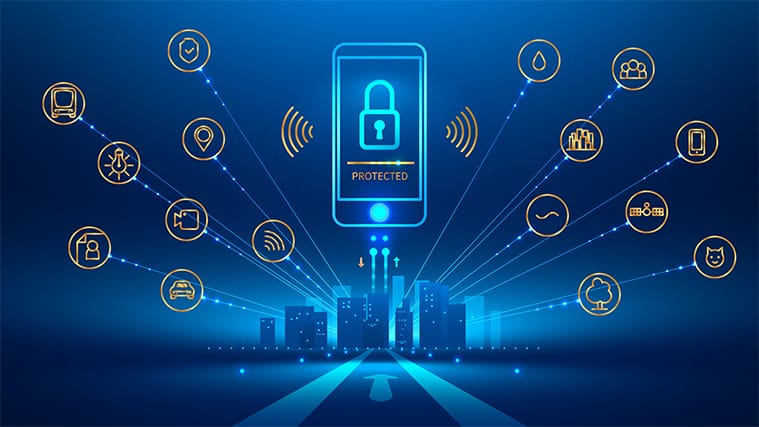
1. Device Authentication
Implement strong authentication mechanisms to ensure that only authorized devices can connect to your IoT network. This can involve the use of unique device credentials, certificates, or secure keys. To ensure safety, companies often implement strong authentication protocols such as two-factor authentication (2FA).
2. Secure Communication
Encrypt data transmission between IoT devices and the cloud or other systems using secure protocols such as Transport Layer Security (TLS) or Datagram Transport Layer Security (DTLS). This prevents eavesdropping and data tampering.
3. Regular Software Updates
Keep IoT device firmware and software up to date with the latest security patches and bug fixes. This helps to address vulnerabilities and protect against known exploits. Good IoT Device Management can help to keep the device safe.
4. Strong Passwords and Access Control
Enforce the use of strong, unique passwords for IoT devices and administrative interfaces. Implement access control mechanisms to restrict unauthorized access to IoT systems and data.
5. Network Segmentation
Divide your IoT network into separate segments or VLANs (Virtual Local Area Networks) to isolate critical devices and limit the impact of a security breach. This helps to contain potential threats and minimize lateral movement.
6. Monitoring and Logging
Implement robust logging and monitoring capabilities to detect suspicious activities or anomalies. Regularly review logs to identify any security incidents or unauthorized access attempts.
7. Secure Physical Access
Protect physical access to IoT devices by placing them in secure locations. Limit physical access to authorized personnel only, and consider using tamper-resistant hardware or enclosures.
8. Privacy Protection
Minimize the collection and storage of personally identifiable information (PII) to reduce the risk of data breaches. Implement privacy-by-design principles and ensure compliance with relevant data protection regulations.
9. Vulnerability Management
Conduct regular vulnerability assessments and penetration testing of IoT devices and systems to identify and address potential weaknesses. Establish a process for timely patching and mitigation of discovered vulnerabilities.
10. Employee Education and Awareness
Educate employees and users about IoT security best practices, such as avoiding suspicious links or attachments, practicing good password hygiene, and being vigilant about physical security.
11. Supply Chain Security
Assess the security practices of IoT device manufacturers and suppliers. Ensure that they follow secure development processes, provide regular updates, and have a responsible vulnerability disclosure policy.
12. Incident Response Planning
Develop an incident response plan specific to IoT security incidents. This plan should outline steps to be taken in case of a breach, including containment, analysis, recovery, and communication with affected parties.
Frequently Asked Questions
How Much Does It Cost To Implement IoT Solutions?
The cost of implementing Internet of Things (IoT) solutions can vary considerably depending on the scale and complexity of the project. Factors that play a role in determining costs include the number and types of sensors, cloud hosting infrastructure, data storage, analytics software, security measures, and device management services. Costs can range from a few hundred dollars for basic DIY projects to tens or hundreds of thousands for large-scale enterprise-level deployments. Depending on the environment and application needs, IoT solutions may require ongoing investments in hardware maintenance and software upgrades as well.
What Are the Potential Risks of IoT?
In order to build an Internet of Things (IoT) network, a number of components must be present. These include sensors, actuators, and communication protocols for collecting data from the environment and sending commands to the environment. In addition, infrastructure such as access points, gateways, and cloud services are necessary for connecting devices in the IoT network to each other and with external systems. Furthermore, security considerations should also be taken into account when designing an IoT network in order to ensure that confidential information is kept secure and protected from malicious actors.
How Is Data Collected and Managed From IoT Devices?
Data collected and managed from IoT devices is typically done through the use of a gateway. This device acts as an intermediary between the physical devices connected to it and a centralized data storage repository. The gateway collects data from each device, processes it, and transmits it to the appropriate destination in order for further analysis or action. In addition, security protocols are often implemented at this level to protect against unauthorized access. Depending on the type of system deployed, a range of other management features may be included such as providing remote access control over all connected devices.
Conclusion
The Internet of Things (IoT) has emerged as a transformative force, connecting billions of devices and enabling unprecedented levels of data collection, analysis, and automation. By seamlessly integrating physical objects into the digital realm, IoT has facilitated enhanced efficiency, convenience, and innovation across industries and everyday life. However, with its exponential growth, IoT also brings challenges concerning data privacy, security vulnerabilities, and ethical considerations that must be addressed to ensure a safe and sustainable future. Despite these concerns, the potential of IoT to revolutionize various domains, from healthcare and transportation to smart cities and agriculture, remains immense, promising a connected world where devices intelligently interact to enhance human experiences and create a more efficient and interconnected society.

